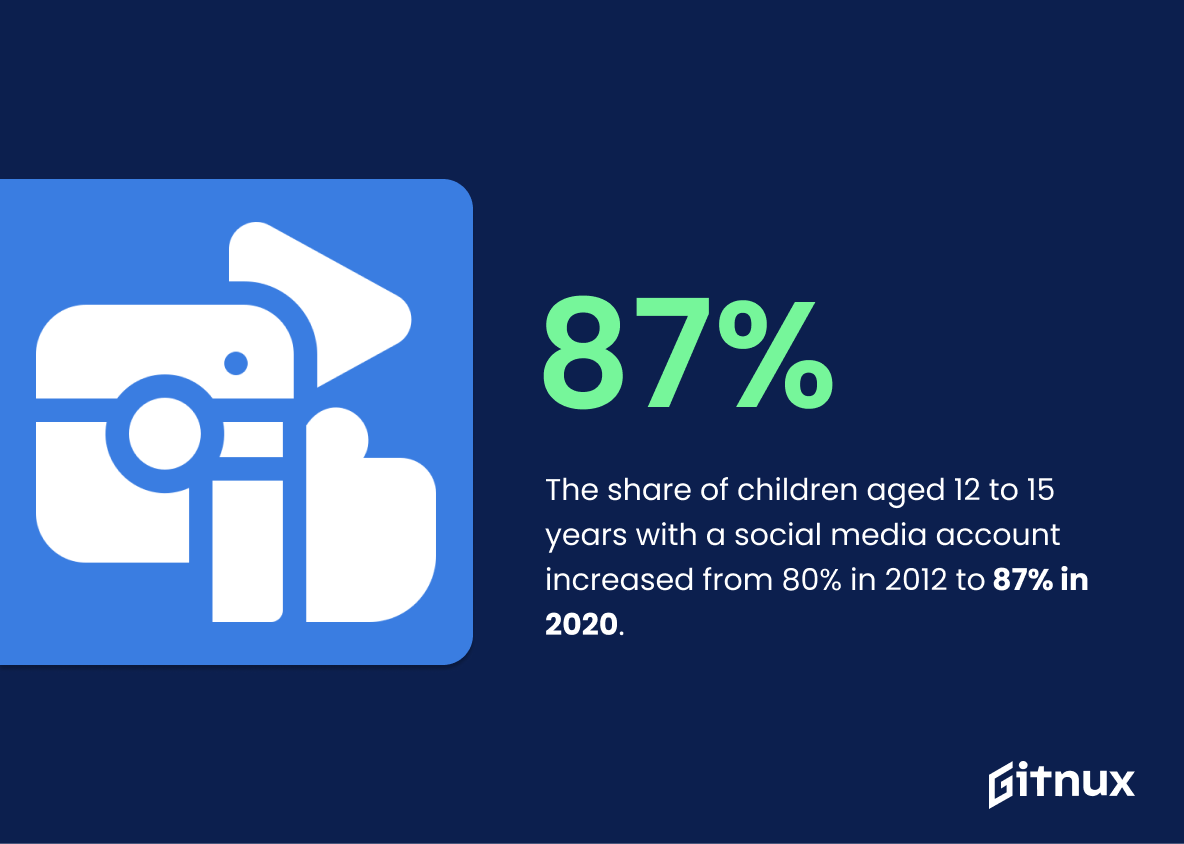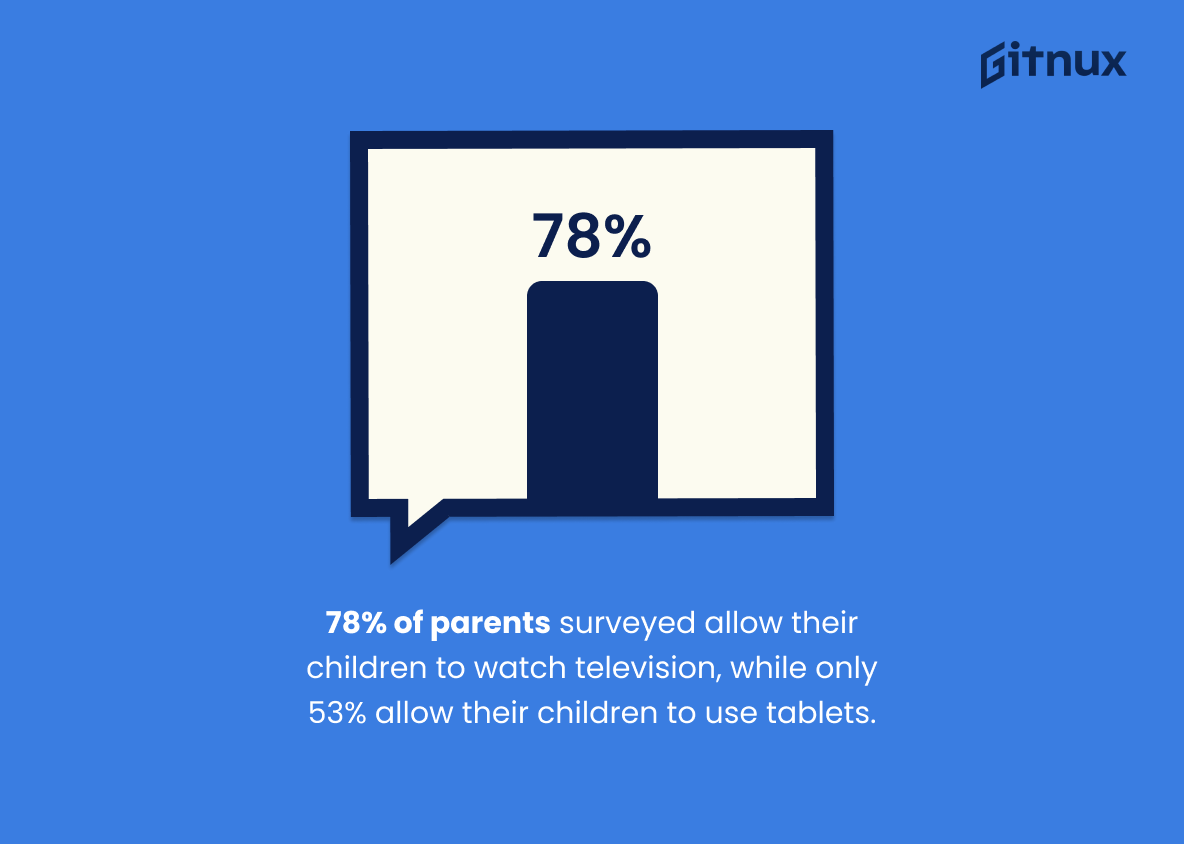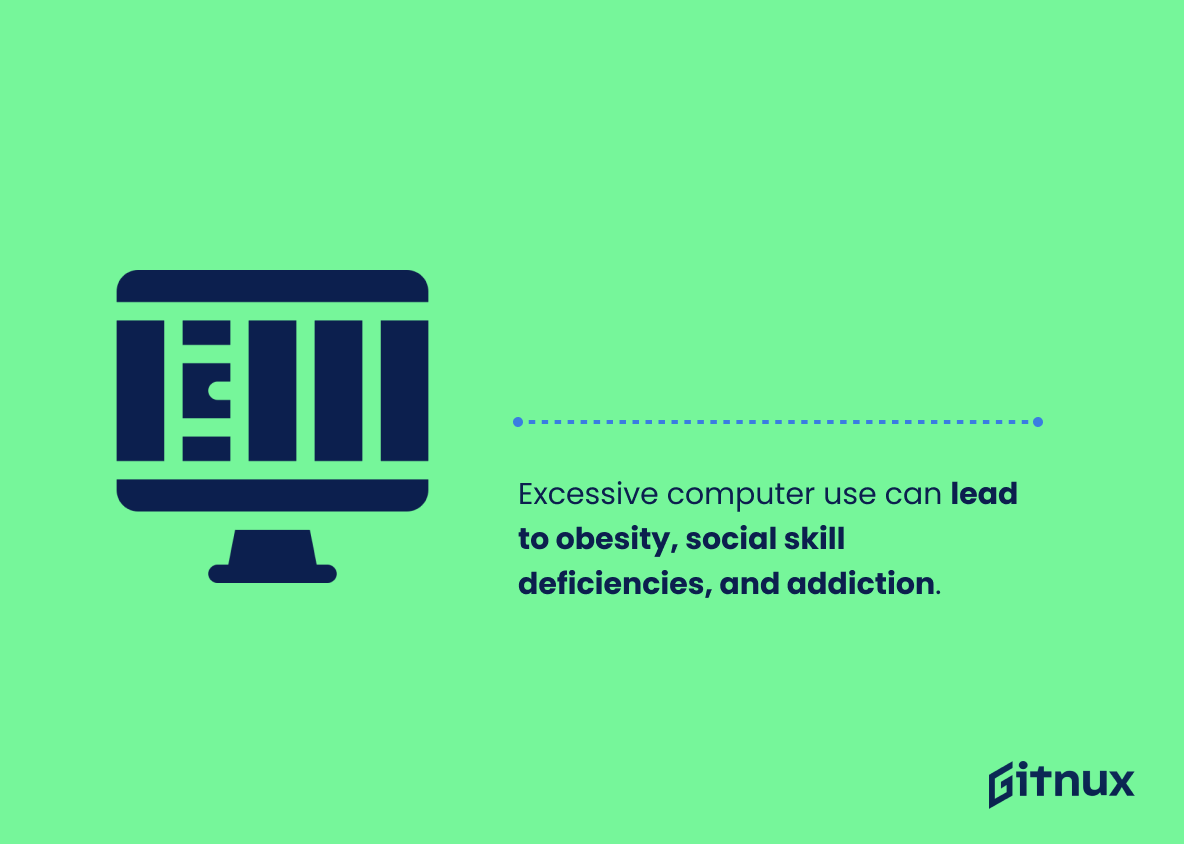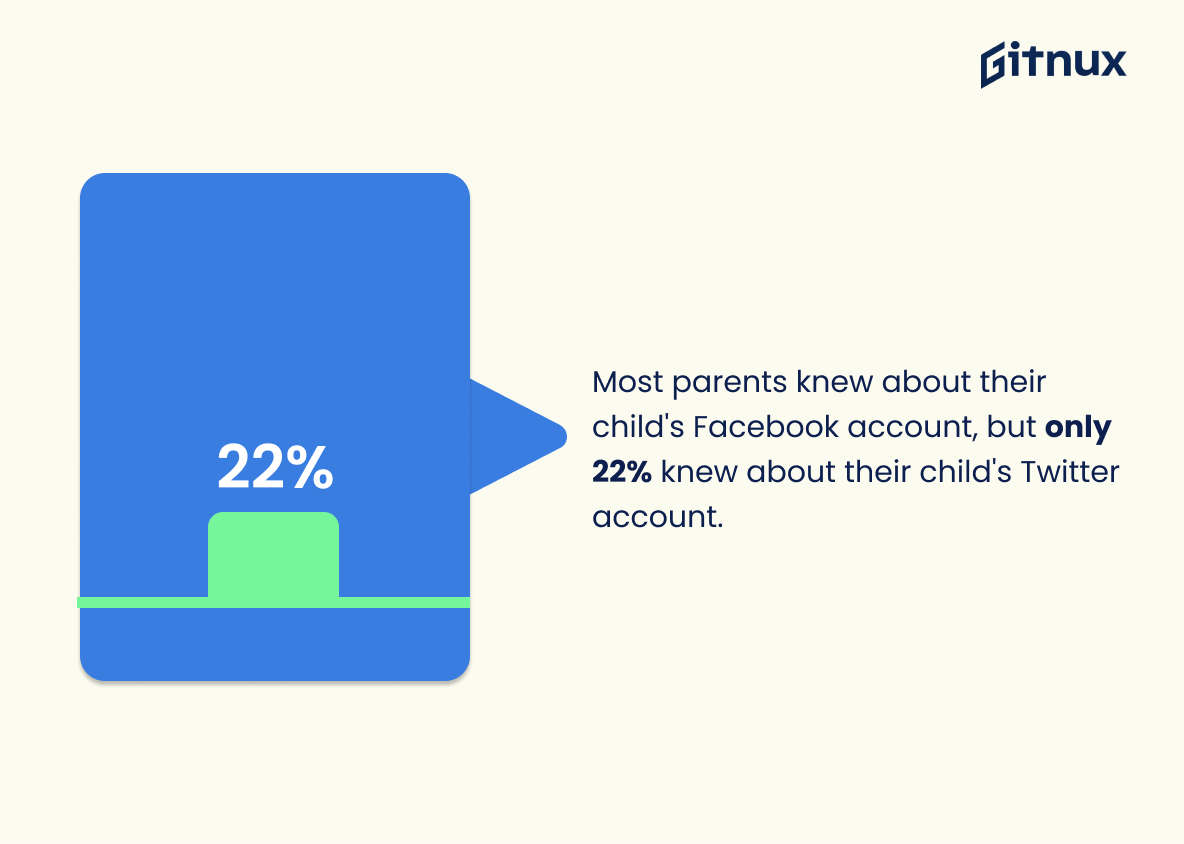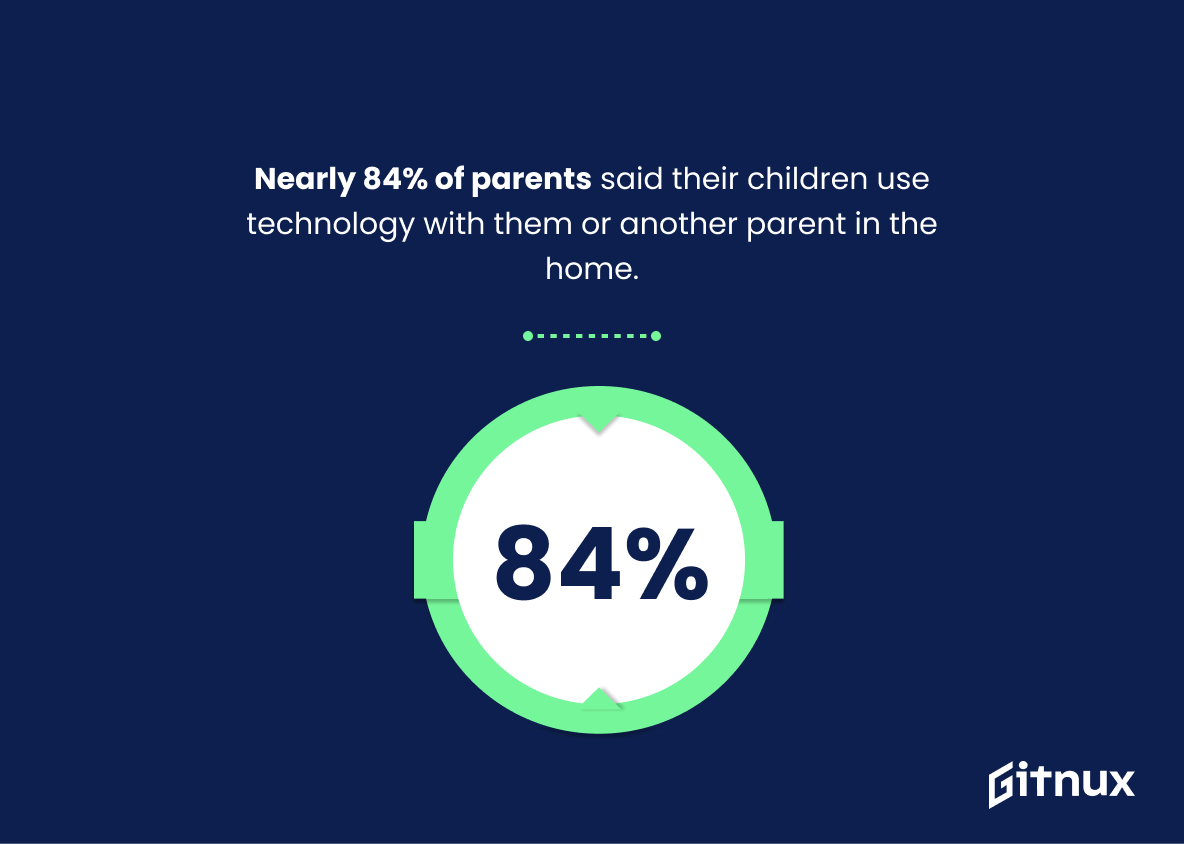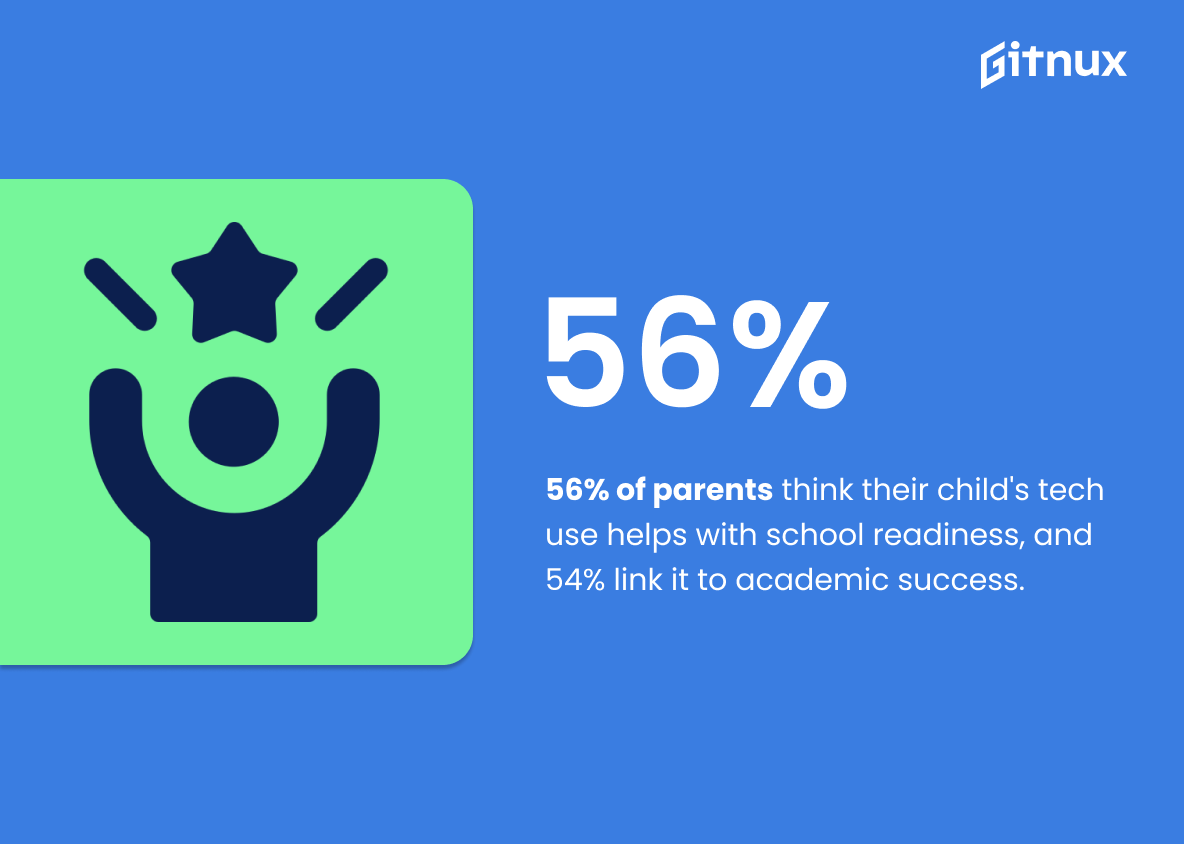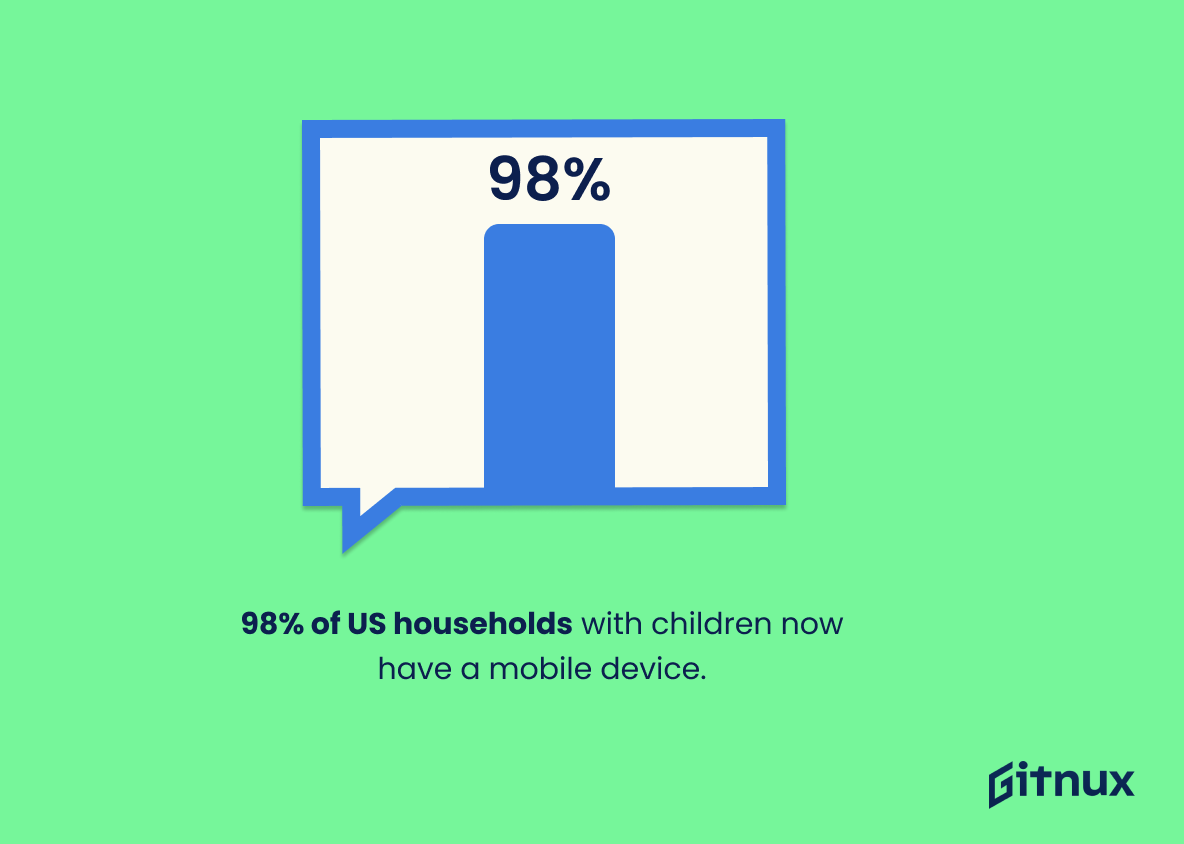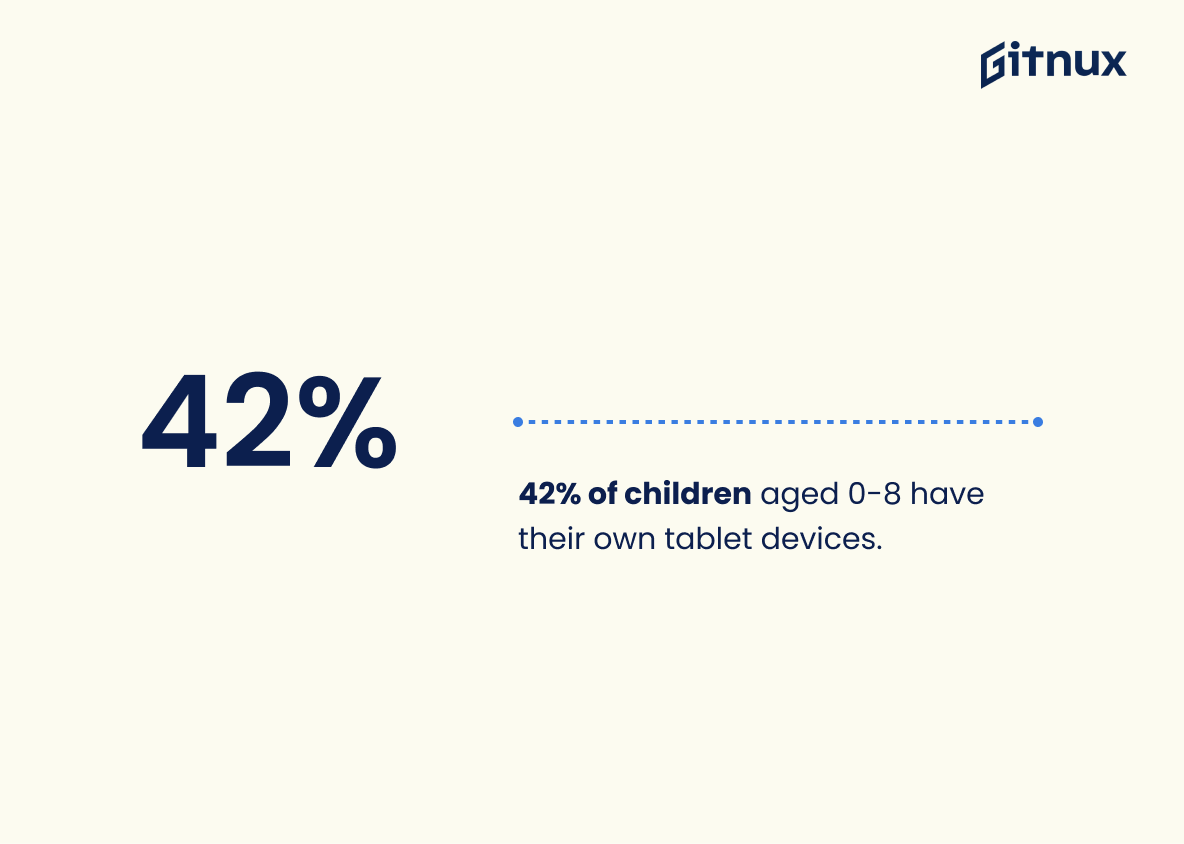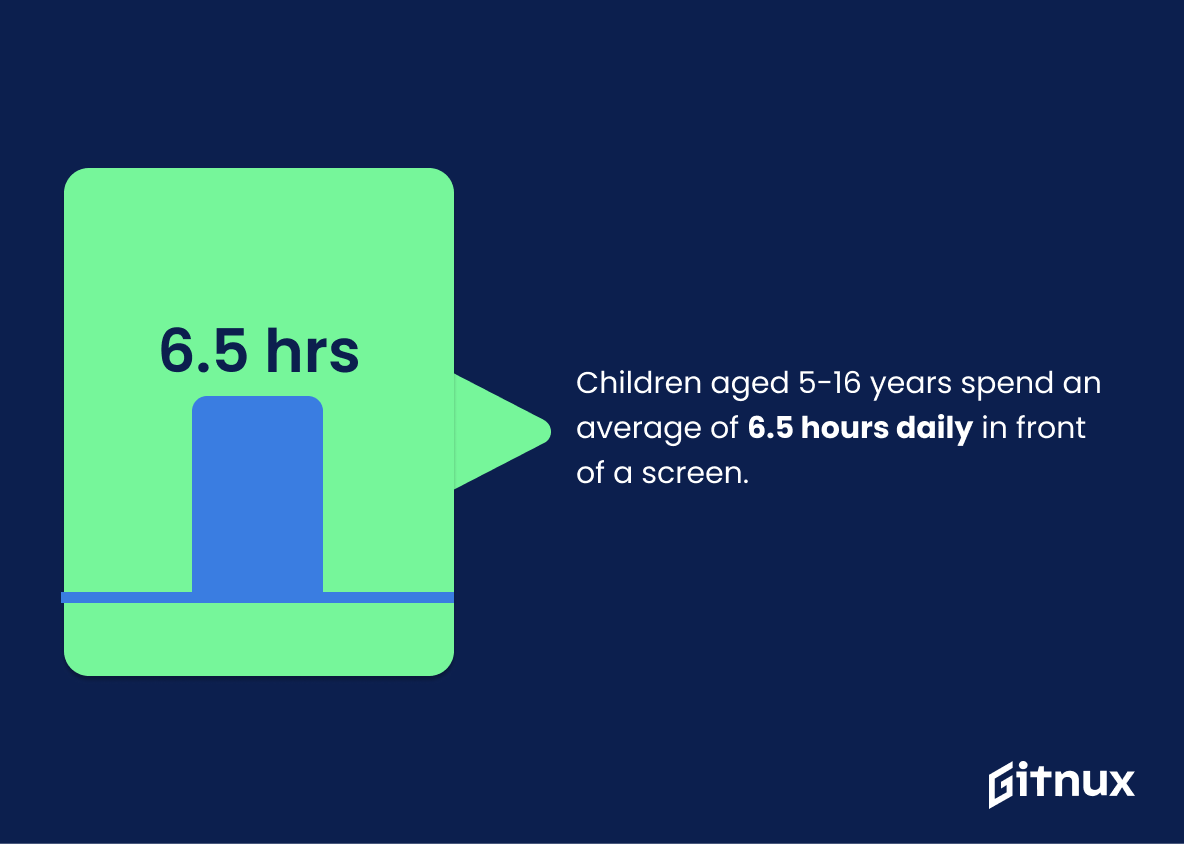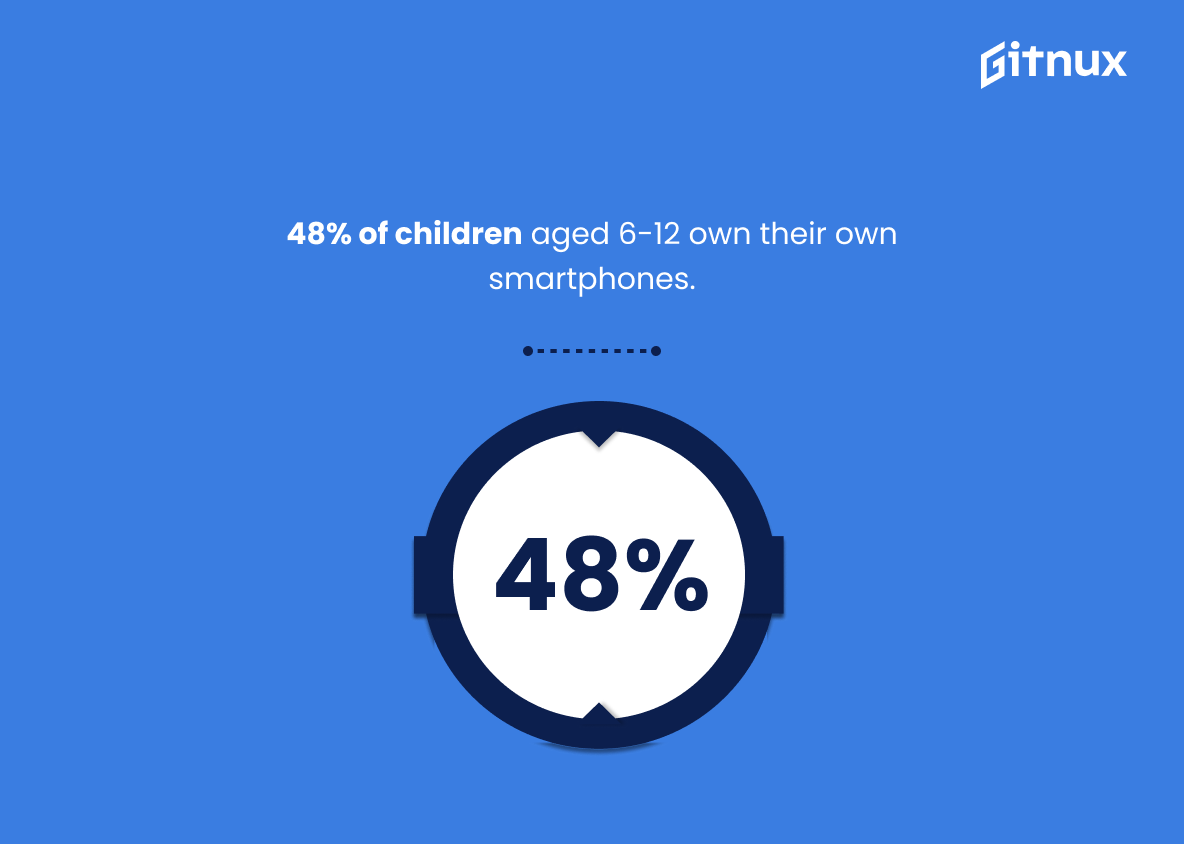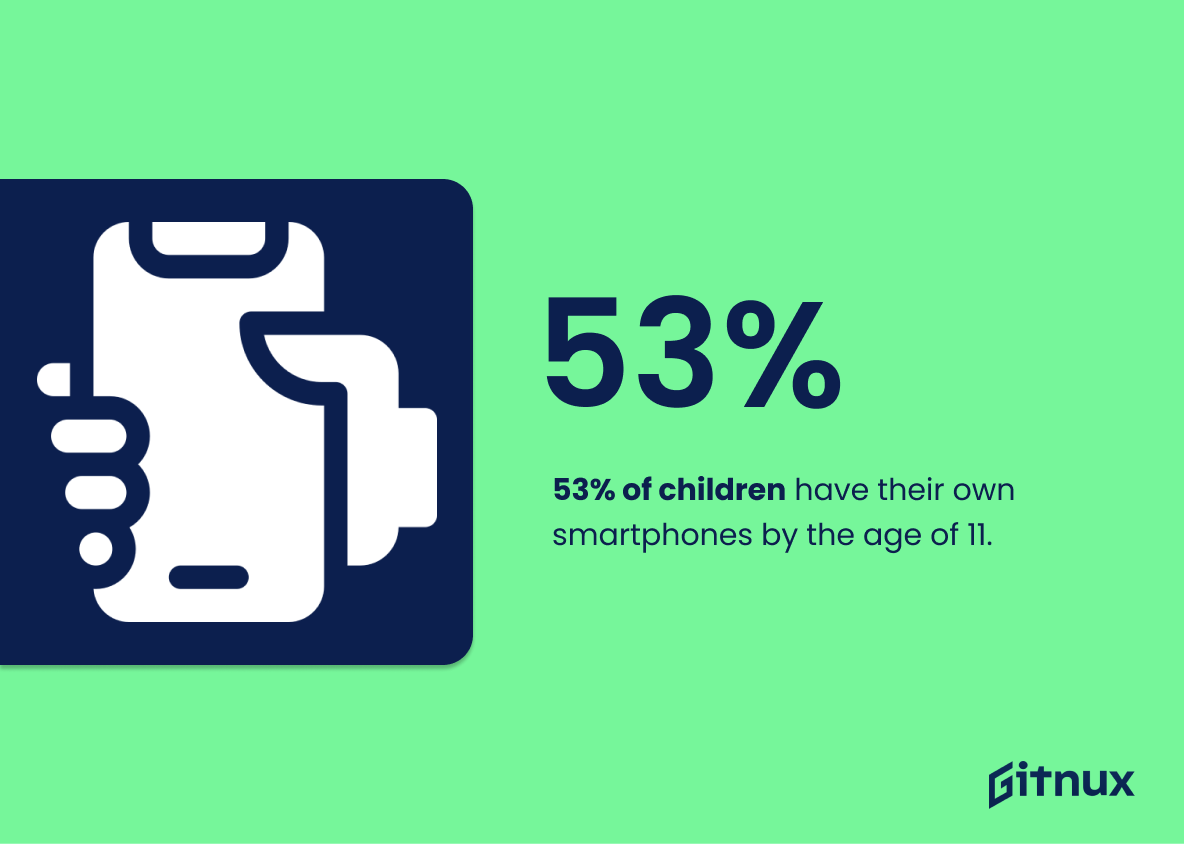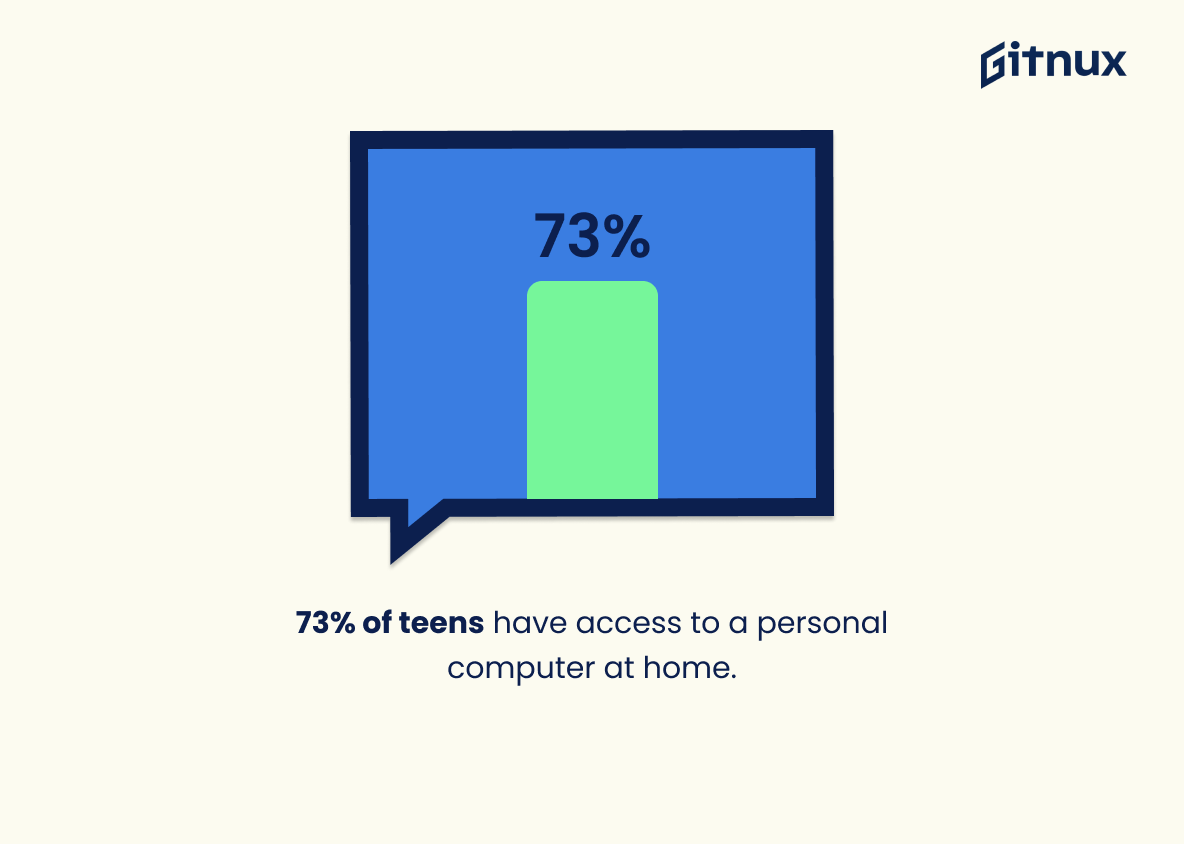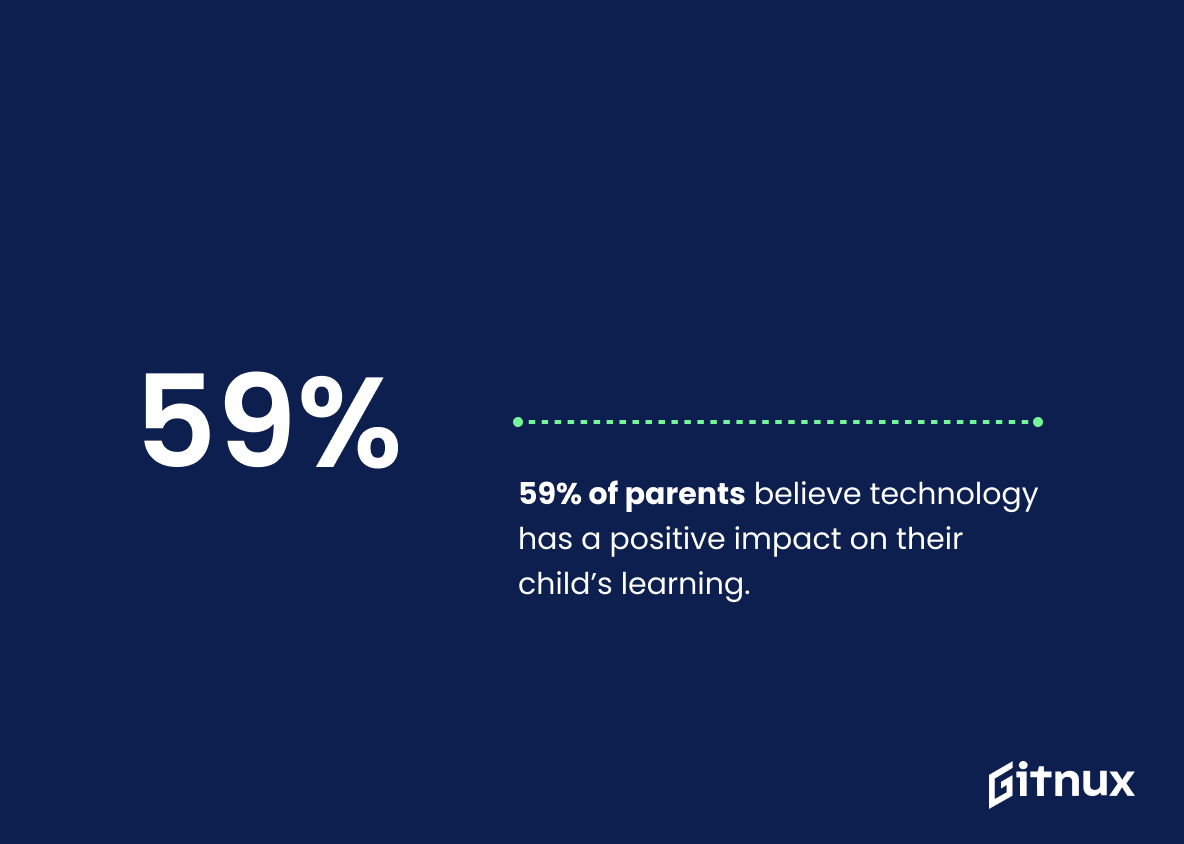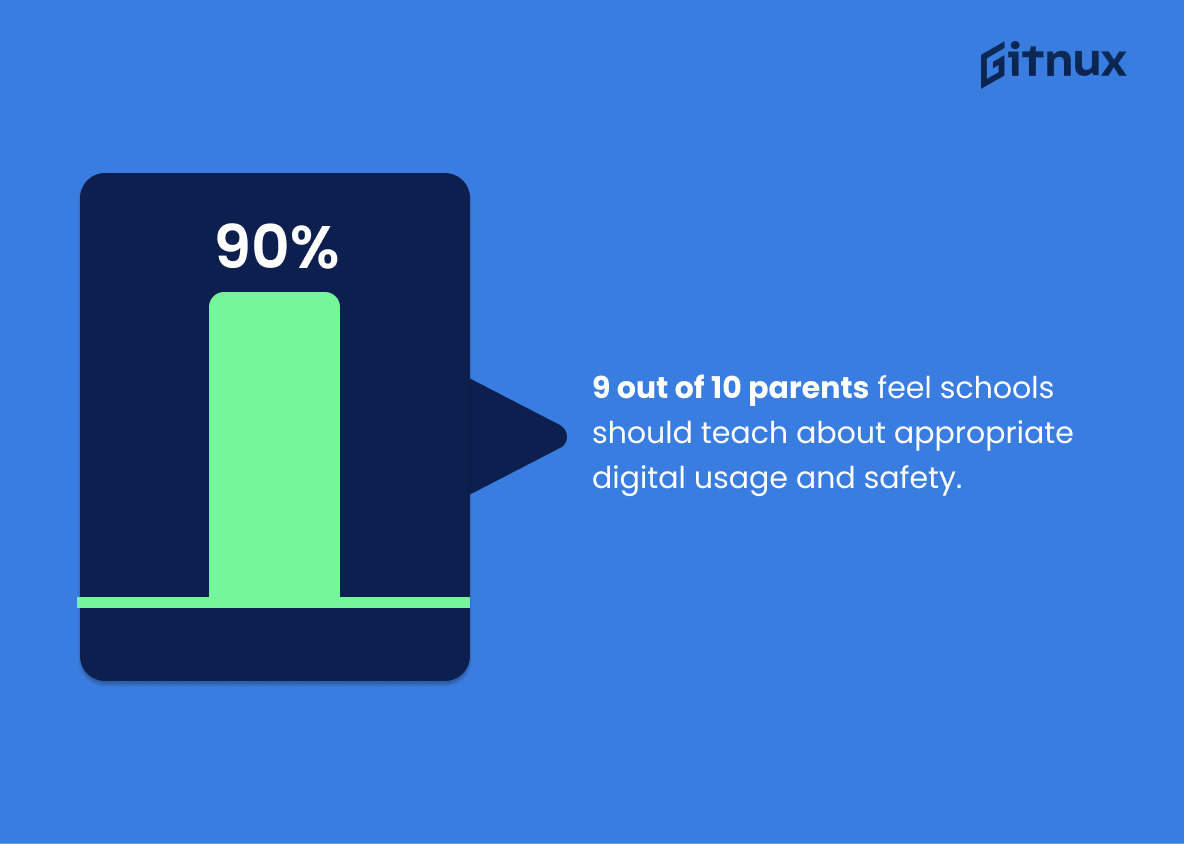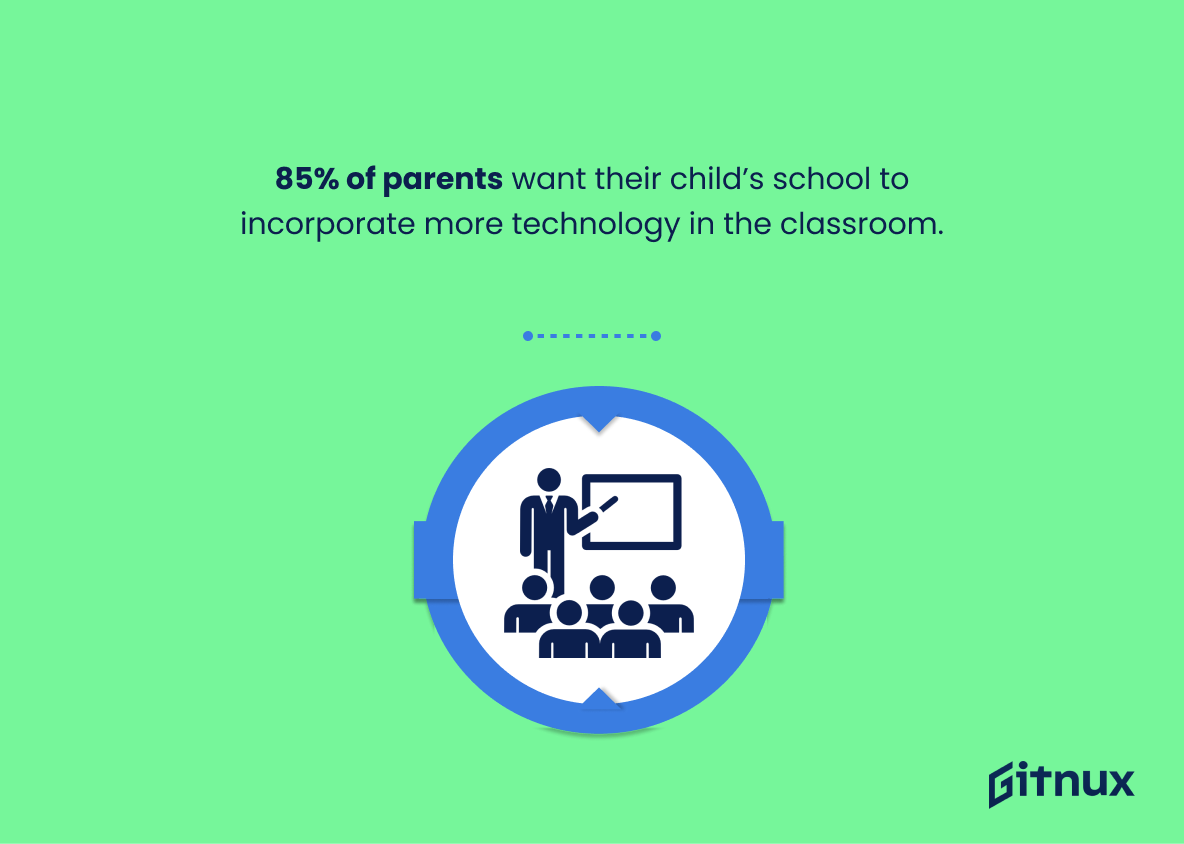Technology has become an integral part of our lives, and it is no surprise that children are being exposed to it from a very young age. With the rise of technology, it is important to understand the impact it has on children and how it is affecting their development.
In this blog post, we will take a look at technology and children statistics, and discuss the implications of these findings. We will also discuss the potential benefits of technology and how it can be used to help children learn and grow.
Technology And Children: The Most Important Statistics
8-18-year-olds prefer watching online videos as their favorite media activity, with YouTube being the most popular site.
78% of parents surveyed allow their children to watch television, while only 53% allow their children to use tablets.
Technology And Children: Statistics Overview
The share of children aged 12 to 15 years with a social media account increased from 80% in 2012 to 87% in 2020.
This statistic shows the increasing presence of social media in the lives of children and adolescents. This is significant because it can have implications for their mental health, social development, and overall wellbeing.
8-18-year-olds prefer watching online videos as their favorite media activity, with YouTube being the most popular site.
This shows how technology is impacting the lives of children today. It demonstrates that children are increasingly turning to digital media for entertainment and communication, which has implications for the way they interact with the world around them. Parents and educators need to be aware of the types of content that children are consuming online and to ensure that they are using the internet safely and responsibly.
78% of parents surveyed allow their children to watch television, while only 53% allow their children to use tablets.
Parents are more comfortable with their children using technology with limited access, such as television, than they are with devices with more flexibility, like smartphones or PCs. This indicates that parents are more aware of the potential risks associated with more advanced technology and are taking steps to protect their children.
Check out our latest Screen Time Impact On Children Statistics
On average, children spend over 3 hours consuming media, with two-thirds of that time being spent on screen media and less than 20 minutes on reading.
This statistic highlights the amount of time children are spending on technology, and the potential impact this could have on their development. It also shows the potential for technology to replace traditional forms of learning, such as reading, which could have a negative impact on children’s educational outcomes.
Excessive computer use can lead to obesity, social skill deficiencies, and addiction.
It demonstrates the potential negative effects of technology on children’s physical and mental health. It also emphasizes the importance of setting limits on computer use and monitoring children’s online activities to ensure they are engaging in healthy activities.
25% of teens that own cell phones use them for social media, 54% for texting and 24% for instant messaging, and teenagers spend over 7.5 hours a day using social media.
These numbers show how much time children are spending on their phones and how they are using them. It also highlights the potential risks of excessive online communication, such as not knowing about social ques that would exclusively take place face-to-face and reduced time spent developing skills to read non-verbal cues of human emotion.
A majority of parents surveyed were aware of their child having a Facebook account, while only 22% were aware of their child having a Twitter account.
This shows that parents are not as aware of their children’s activities on different social media platforms. This could be a sign that parents need to be more aware of their children’s activities online and the potential risks associated with certain platforms.
61% of parents with children aged 8-17 have been alerted to a new person in an online game and monitor their child’s activity to ensure safety.
Parents should be aware of the online activities of their children and take steps to ensure their safety. It also emphasizes the importance of monitoring online activity and recognizing potential risks, such as significant age differences between players.
Nearly 84% of parents said their children use technology with them or another parent in the home.
It shows that parents are actively involved in their children’s technology use, which is essential for setting healthy boundaries and teaching responsible digital behaviors. By having parents present while their children are using technology, they can monitor and guide their children’s activities, ensuring they are safe and learning how to use technology responsibly.
56% of parents believed that their child’s technology use promotes school readiness, and 54% associate technology use with having an impact on success in school.
A majority of parents are recognizing the potential value of technology use in preparing their children for school and in helping them succeed academically. It also indicates that parents understand the importance of integrating technology into children’s learning experiences. This highlights the need for more resources and support to help parents navigate the complexities of technology use and to ensure that children are using technology safely and responsibly.
Parents also identified developmental benefits of technology for their child: 72% see a benefit to early learning, 62% to language skills, and 69% to computer and technology skills.
Parents recognize the developmental benefits that technology can provide for their children. It suggests that parents are aware of the potential of technology to help children learn, develop language skills, and become proficient in computer and technology skills. They also take an active role in ensuring their children are using technology to their advantage.
While embracing the benefits of technology, parents also expressed significant concerns about too much screen time (72%), inappropriate content (69%), and commercial messages aimed at young children (66%). Parents also had concerns about how technology in the home impacts a child’s time spent outdoors (66%), reduces active play (67%), and disrupts sleep (49%).
This statistic shows that parents are not only aware of the potential benefits of technology, but also the potential risks associated with it. It indicates that parents are taking the time to think critically about the impact of technology on their children and are taking measures to ensure that their children are using technology safely and responsibly.
98% of US households with children now have a mobile device.
This speaks to the ubiquity of mobile devices in households with children, and the potential for technology to shape the lives of the next generation. It is an important statistic to consider when discussing the impact of technology on children.
42% of children aged 0-8 have their own tablet devices.
Technology is becoming increasingly accessible to children at a younger age, and that it is becoming a more integral part of their lives. This statistic is important to consider when discussing the impact of technology on children, as it provides insight into the extent to which technology is being used by children and how it is affecting their development.
Children aged 5-16 years spend an average of 6.5 hours daily in front of a screen.
This is a key indicator of the prevalence of technology in our lives, and the need to ensure that children are using technology in a safe and responsible way.
48% of children aged 6-12 own their own smartphones.
Technology is becoming increasingly accessible to younger generations, and that it is playing an increasingly important role in their lives. This statistic is important to consider when discussing the impact of technology on children, as it provides insight into the extent to which technology is being used by children and how it is affecting their lives.
53% of children have their own smartphones by the age of 11.
Technology is becoming increasingly accessible to younger generations, and that it is playing an increasingly important role in their lives. This statistic is important to consider when discussing the impact of technology on children, as it provides insight into the extent to which technology is being used by children and how it is affecting their lives.
73% of teens have access to a personal computer at home.
Technology is no longer a luxury, but a necessity for many teens. This is an important point to consider when discussing the impact of technology on children, as it shows that technology is an integral part of their lives.
By the age of 2, 90% of children have an online presence.
This highlights the importance of understanding the implications of technology on children’s development and how parents can ensure their children are using technology safely and responsibly. It is a call to action for parents to be aware of the potential risks of technology and to take steps to protect their children from potential harm.
59% of parents believe technology has a positive impact on their child’s learning.
Parents are increasingly recognizing the value of technology in their child’s education, and that they are willing to embrace it as a tool to help their children succeed. This statistic is an important reminder that technology can be a powerful ally in the classroom, and that parents should be open to exploring its potential to help their children learn.
Children aged 8-12 spend an average of 4 hours and 36 minutes on screens daily, excluding schoolwork.
This highlights the need for parents to be aware of the amount of time their children are spending on screens, and to ensure that it is balanced with other activities. It also serves as a warning that technology can be a powerful tool, but it should be used responsibly and in moderation.
9 out of 10 parents feel schools should teach about appropriate digital usage and safety.
The majority of parents recognize the need for their children to be educated on the potential risks of technology and how to use it responsibly. This is an important issue that needs to be addressed, as technology is becoming increasingly prevalent in our lives and children need to be equipped with the knowledge to use it safely.
67% of parents are concerned about cyberbullying.
This highlights the importance of educating parents on the dangers of cyberbullying and the steps they can take to protect their children from it.
71% of 12-15 year-olds use social media platforms in the US.
This highlights the importance of understanding the impact of technology on children, and the need to ensure that they are using it safely and responsibly.
87% of boys and 80% of girls aged 12-15 have a gaming console in their room.
Gaming consoles are becoming increasingly commonplace in the bedrooms of both boys and girls aged 12-15, suggesting that technology is becoming an integral part of their lives. This is an important statistic to consider when discussing the impact of technology on children.
37% of 3-4-year-olds use tablets to watch video content.
Tablets are becoming increasingly popular among 3-4-year-olds, and that they are using them to watch video content. This is significant because it suggests that technology is becoming an integral part of the lives of young children, and that it is influencing their development and behavior.
45% of parents believe their children spend too much time online.
This highlights the need for parents to be aware of the amount of time their children are spending online and to take steps to ensure that their children are using technology in a safe and responsible way.
85% of parents want their child’s school to incorporate more technology in the classroom.
Parents are eager for their children to have access to the latest technology and tools to help them learn. This statistic is a strong argument for incorporating more technology into the classroom, as it demonstrates that parents are supportive of the idea and are willing to invest in their children’s education.
Conclusion
In conclusion, technology has had a major impact on the lives of children today. It has opened up new opportunities for learning, communication, and entertainment. However, it is important to be aware of the potential risks associated with technology, such as cyberbullying, addiction, and privacy concerns.
Parents should be aware of the potential risks and take steps to ensure their children are safe and responsible when using technology. By understanding the potential risks and benefits of technology, parents can help their children make the most of the opportunities that technology provides.
References
1 – https://www.statista.com/statistics/415138/social-media-usage-among-children-uk/
2 – https://www.commonsensemedia.org/sites/default/files/research/report/8-18-census-integrated-report-final-web_0.pdf
3 – http://www.techaddiction.ca/media-statistics.html
4 – https://www.erikson.edu/wp-content/uploads/2018/07/Erikson-Institute-Technology-and-Young-Children-Survey.pdf
5 – http://www.techaddiction.ca/media-statistics.html
6 – https://www.ons.gov.uk/peoplepopulationandcommunity/crimeandjustice/bulletins/childrensonlinebehaviourinenglandandwales/yearendingmarch2020
7 – https://www.ncbi.nlm.nih.gov/pmc/articles/PMC2792691/
8 – https://www.newyorkbehavioralhealth.com/the-impact-of-social-media-use-on-social-skills/
9 – https://www.statista.com/statistics/820608/parental-awareness-children-social-media-account/
10 – https://saferinternet.org.uk/blog/safer-internet-day-2022-research-findings-revealed
11 – https://www.nielsen.com
12 – https://www.commonsensemedia.org
13 – https://education.microsoft.com
14 – https://nces.ed.gov
15 – https://parentzone.org.uk
16 – https://www.microsoft.com
17 – https://www.childwise.co.uk
18 – https://www.pewresearch.org
19 – https://www.ofcom.org.uk
20 – https://www.purevpn.com
